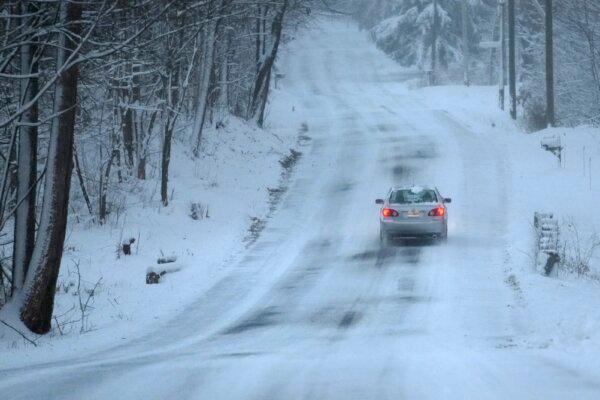Winter storm warnings were in effect Wednesday across the western United States.
As more winter storm warnings and advisories are under effect across the western United States on Wednesday, a National Weather Service (NWS) official advised what Americans should do if they’re ever caught in a blizzard.
But starting this weekend, icy cold air from the Arctic will start to spread across the middle of the United States and will continue into the next week, said the NWS’s Weather Prediction Center in a post on Tuesday.
The agency said, “Much below normal temperatures along with gusty winds will lead to wind chills well below zero for many locations.”
According to a map posted by the weather service, when factoring in wind chill, temperatures could reach minus-60 degrees Fahrenheit in parts of North Dakota, Montana, and possibly Idaho.
Separately, it warned snow-struck regions of the Midwest and the Great Plains that temperatures could plunge dangerously low, dipping to around minus 20, and even far lower in Chicago and Kansas City.
Private forecasters including AccuWeather made similar predictions for the weekend and next week, with AccuWeather describing it as the “coldest weather so far” this season. “This outbreak of cold air will rival the arctic air mass right before Christmas 2022,” AccuWeather forecaster Tom Kines said.
The severe cold could put pressure on energy demands in the Southern United States, forecasters warned. In parts of Texas and Oklahoma, temperatures may drop to below zero Fahrenheit at night.
“The stratospheric polar vortex is now stretching down across North America,” NOAA scientist Amy Butler wrote on Tuesday afternoon. “That polar jet will be pushed further south, and guess what that does? It opens up the freezer door,” said Fox Weather Meteorologist Kendall Smith, who added: “All of that cold, arctic air that has been bottled up right over Canada, right over the Arctic, is going to be blasting its way right into the Lower 48.”
The Arctic about two weeks ago underwent a stratospheric warming, which slowed the polar vortex winds, said Ms. Butler in an article.
Temperatures for the 2024 Iowa caucuses on Monday, Jan. 22, will be close to zero degrees across much of the state, said the NWS in Des Moines. “Now is the time to check your car batteries, they will be flying off the shelves next week,” the weather service said.
Storms Persist
It came as a major storm drenched the Northeast and slammed it with fierce winds, knocking out power to hundreds of thousands following a bout of violent weather that struck most of the country. That followed a day of tornadoes and deadly accidents in the South and blizzards in the Midwest and Northwest. In some parts of the Pacific Northwest and the Rockies, more than two feet of snow fell.
The storm, which began Monday, buried cities across the Midwest in snow, stranding people on highways. Some areas saw up to a foot (30 centimeters) of snow on Monday, including Kansas, eastern Nebraska and South Dakota, western Iowa, and southwestern Minnesota. Madison, Wisconsin, was under a winter storm warning until early Wednesday, with as much as 9 inches of snow and 40 mph winds occurring.
In a bulletin on Wednesday, the NWS said that a “combination of heavy snow and strong winds will create blizzard conditions at times in parts of the Northwest through this afternoon, and storm total snow accumulations may reach several feet in the higher elevations of the Cascades and Olympics,” referring to the mountain ranges. “ Low visibility will make travel conditions particularly hazardous for many of the mountain passes.”

Storms in the Pacific Northwest and Rocky Mountains dumped snow, including 29 inches at Stevens Pass in Washington and 30 inches outside Santa Fe, New Mexico, according to the NWS.
Authorities issued warnings for very dangerous avalanche conditions in mountainous areas of Idaho, Montana, Wyoming, Utah, Washington, and Oregon. Backcountry travelers were advised to stay off steep slopes and away from the bottom of steep slopes.
“So we were pretty lucky for a good chunk of the month of December and even into the very beginnings of January, but now it’s been a kind of page turn, if you will, a complete flip of the script,” Mr. Smith, the Fox Weather forecaster, noted. “Because now we’re starting to see that cold air that has been locked in place over Canada and over the Arctic. That’s going to be starting to change.”







